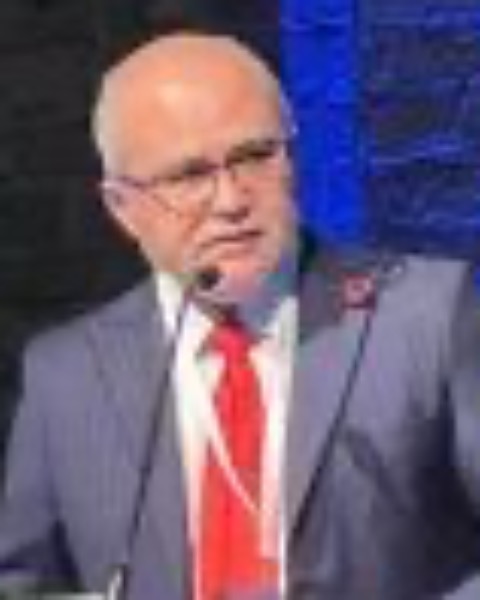Back
General Session V - Venous Thromboembolism and IVC Filters
General Session V - Venous Thromboembolism and IVC Filters
Endothelial Repair, a Novel Approach on Acute Deep Venous Thrombosis Management
Tuesday, March 5, 2024
9:12 AM - 9:22 AM EST
Location: Tampa Bay Ballroom Salons 1-4
Objective:
Recent data suggest DVT is part of a pro inflammatory vascular condition. During DVT, devastating damage is done to the venous endothelial layer. Glycocalyx is seriously damaged during this process. Sulodexide represents an antithrombotic agent with multiple sites of action on blood coagulation and related inflammatory vascular processes found on D.V.T. We state that the concomitant use of sulodexide and one of the new oral anticoagulants, rivaroxaban, during the acute phase of DVT seems to significantly accelerate the natural process of recovery and recanalization of the deep vein thrombosis process.
Methods:
We made a study comparing two groups, 126 pts. were included. All pts. W/ femoral, popliteal or below the knee DVT, confirmed by CUS. 40 pts. received conventional treatment with Rivaroxaban 15 mg BID for 30 days plus 20 mmHg thigh high compression, the other group, 86 patients received same treatment plus Sulodexide 250 LRU BID 30 days. CUS at 10, 20 and 30 days to evaluate the thrombus process. Circumference of the affected leg on 3 points at 10, 20, and 30 days, and QOL thru CIVIQ-20 questionnaire. We also measured Neutrophil Lymphocyte Ratio (NLR) and Systemic Immune Inflammatory Index (SIII) as markers of inflammation on 87 pts, 35 of the control group and 52 on the problem group at day 0, 10, and 30.
Results:
Both groups matched age, sex, and site of DVT. Group that received Sulodexide significantly reduced leg circumference at 20 days, average of 2.6 cm above the control group, venous US was similar on both groups and CIVIQ-20 questionnaire was significantly better on the Sulodexide group 91 points pretreatment and 42 points at 20 days versus 93 points pretreatment and 52 points at 20 days on the Rivaroxaban only group. NLR measured at 0,10 and 30 days resulted on a significant decrease from an average of 8.2 to 3.7 on the problem group compared to 8.3 to 6.0 on the control group, and SIII decreased on the problem group from 890 X 109 to 405 X 109 a significant difference compared to control of 880 X 109 to 679 X 109 .
Conclusions: - Sulodexide is an agent that has multiple antithrombotic, anti-inflammatory, and anticoagulant actions, as well as reparative effects on venous endothelium and endothelial glycocalyx. This agent seems to significantly accelerate the thrombolytic process and decrease the systemic and local inflammatory reaction provoked during the acute period of DVT and it also seems to have some influence on post thrombotic syndrome. It is a secure adjuvant to new oral anticoagulants accelerating the recovery process of the patients with DVT.
Recent data suggest DVT is part of a pro inflammatory vascular condition. During DVT, devastating damage is done to the venous endothelial layer. Glycocalyx is seriously damaged during this process. Sulodexide represents an antithrombotic agent with multiple sites of action on blood coagulation and related inflammatory vascular processes found on D.V.T. We state that the concomitant use of sulodexide and one of the new oral anticoagulants, rivaroxaban, during the acute phase of DVT seems to significantly accelerate the natural process of recovery and recanalization of the deep vein thrombosis process.
Methods:
We made a study comparing two groups, 126 pts. were included. All pts. W/ femoral, popliteal or below the knee DVT, confirmed by CUS. 40 pts. received conventional treatment with Rivaroxaban 15 mg BID for 30 days plus 20 mmHg thigh high compression, the other group, 86 patients received same treatment plus Sulodexide 250 LRU BID 30 days. CUS at 10, 20 and 30 days to evaluate the thrombus process. Circumference of the affected leg on 3 points at 10, 20, and 30 days, and QOL thru CIVIQ-20 questionnaire. We also measured Neutrophil Lymphocyte Ratio (NLR) and Systemic Immune Inflammatory Index (SIII) as markers of inflammation on 87 pts, 35 of the control group and 52 on the problem group at day 0, 10, and 30.
Results:
Both groups matched age, sex, and site of DVT. Group that received Sulodexide significantly reduced leg circumference at 20 days, average of 2.6 cm above the control group, venous US was similar on both groups and CIVIQ-20 questionnaire was significantly better on the Sulodexide group 91 points pretreatment and 42 points at 20 days versus 93 points pretreatment and 52 points at 20 days on the Rivaroxaban only group. NLR measured at 0,10 and 30 days resulted on a significant decrease from an average of 8.2 to 3.7 on the problem group compared to 8.3 to 6.0 on the control group, and SIII decreased on the problem group from 890 X 109 to 405 X 109 a significant difference compared to control of 880 X 109 to 679 X 109 .
Conclusions: - Sulodexide is an agent that has multiple antithrombotic, anti-inflammatory, and anticoagulant actions, as well as reparative effects on venous endothelium and endothelial glycocalyx. This agent seems to significantly accelerate the thrombolytic process and decrease the systemic and local inflammatory reaction provoked during the acute period of DVT and it also seems to have some influence on post thrombotic syndrome. It is a secure adjuvant to new oral anticoagulants accelerating the recovery process of the patients with DVT.

Erasto Aldrett Lee, MD
CHIEF OF STAFF
GRUPO DE ATENCIÓN VASCULAR INTEGRAL
SAN LUIS POTOSÍ, San Luis Potosi, Mexico
